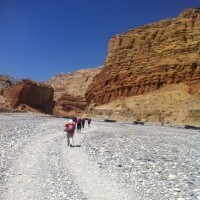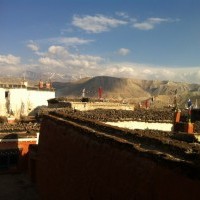Highlights
- Visit 13th century Royal Palace in the capital of Lo Manthang
- Walk along Kali Gandaki river to the towns of Jomsom and Kagbeni
- Splendid views of Annapurna, Dhaulagiri, Manaslu and Nilgiri
- Visit ancient Buddhist shrines, high cliffs, caves and gompas
- Witness 3 day Tiji Festival
The visit to Lo Manthang, in particular, is truly mesmerizing on account of its 13th century Royal Palace, Jampa and Thubchen gompas prominently circled by whitewashed mud-brick walls.
Lying to the north side of massive Dhaulagiri and Annapurna peaks, for centuries Upper Mustang remained a forbidden trans-Himalayan kingdom until it was opened for tourism activity in 1992. A special permit is required to do Upper Mustang Trek, which includes a visit to the capital of Lo Manthang (3840m).
The whole area of Upper Mustang and its impressive geological formation has an isolated and mystical feel to it, enchanting and inspiring visitors to this region. The culture, language, and customs of Mustang people are closely related to their Tibetan cousins. Against the unique and barren landscape of Upper Mustang, are colorful cliffs, palaces, secret caves, and ancient Buddhist shrines.
The visit to Lo Manthang, in particular, is truly mesmerizing on account of its 13th century Royal Palace, Jampa and Thubchen gompas prominently circled by whitewashed mud-brick walls. You can also visit nearby cliffs to observe centuries-old Buddhist scripts, pottery shards, mural paintings etc. The towns of Kagbeni and Jomsom (Dzongsak) on the bank of Kali Gandaki river is the home of entrepreneurial Thakali people, famous for Apple brandy and Thakali cuisines. All along the Upper Mustang trekking trail offers splendid views of Nilgiri (7061m), Manaslu (8,163m), Annapurna(8091m) and Dhaulagiri (8167m).
The best seasons for Upper Mustang trek is in Spring (Mar-May), Autumn (Sep-Nov) or Monsoon (June-August). The famous 3 days Tiji Festival that takes place every spring in Lo Manthang is not to be missed.
















